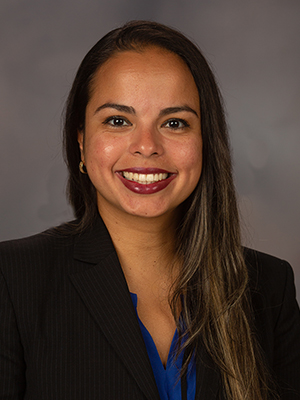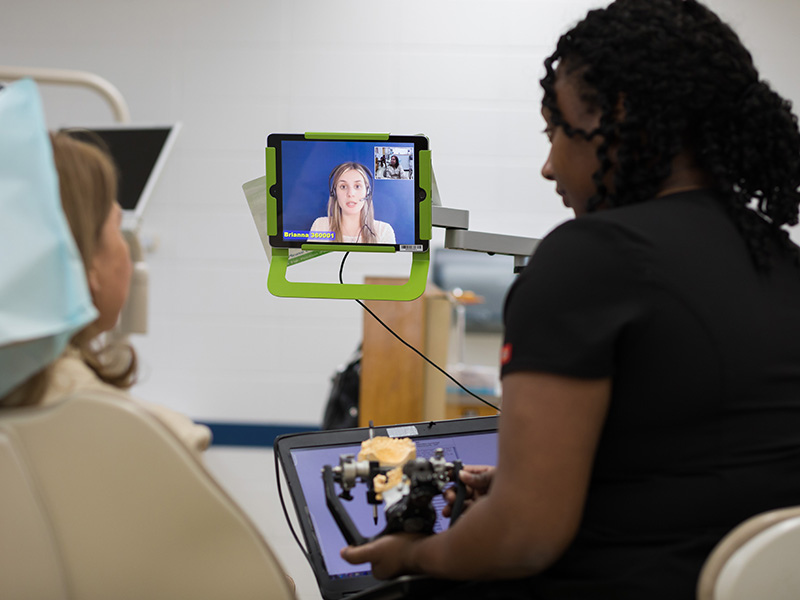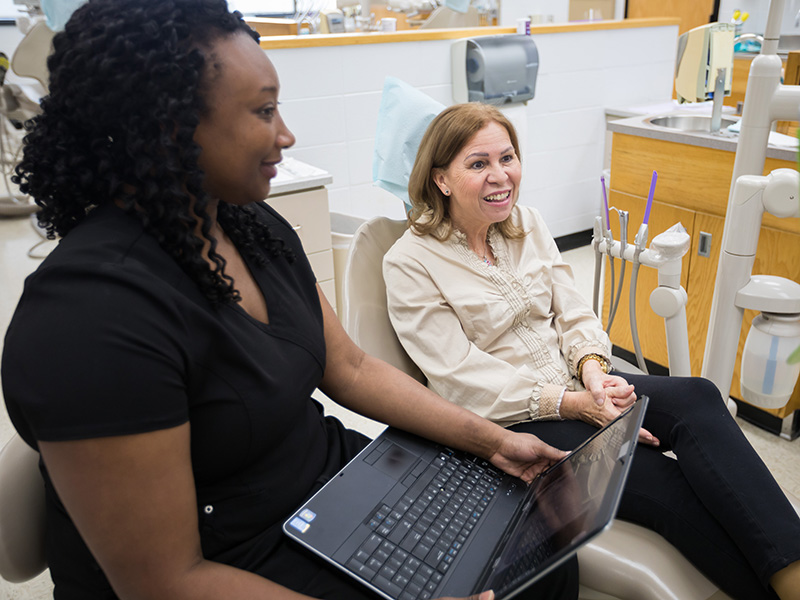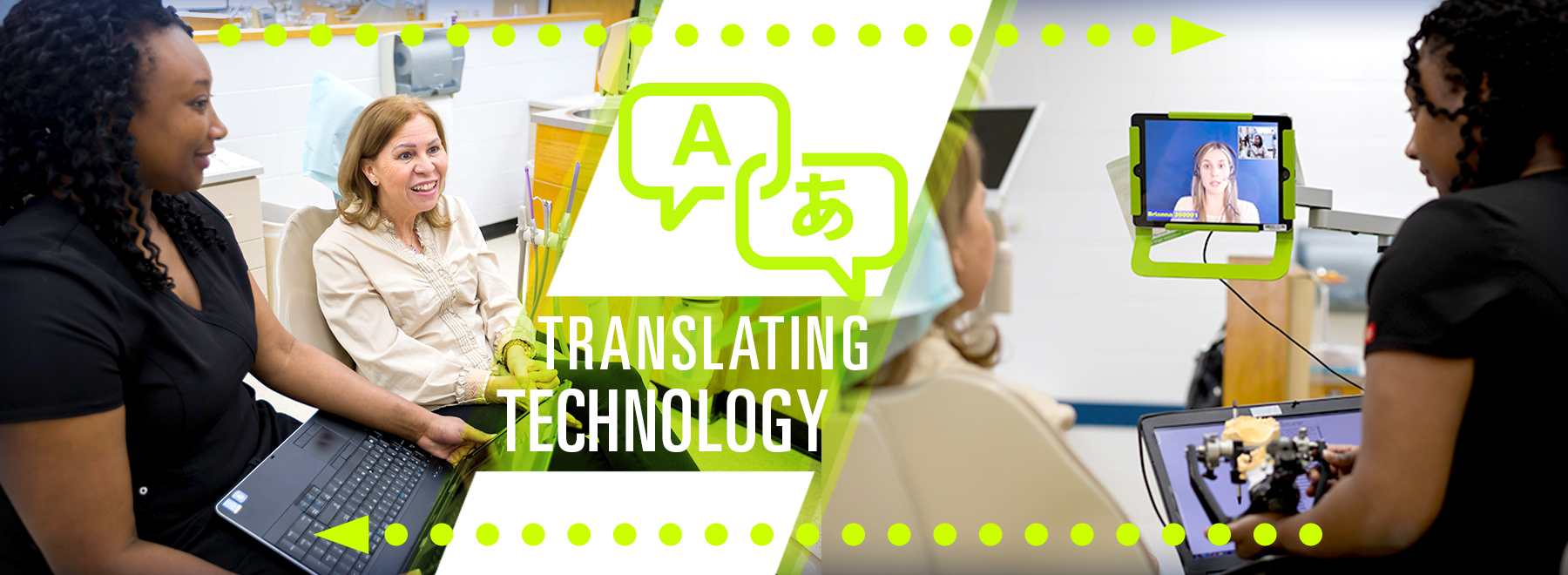Video remotes help non-English-speaking patients communicate with UMMC caregivers
Published on Tuesday, May 1, 2018
By: Ruth Cummins
A University of Mississippi Medical Center patient only speaks Polish, a language completely foreign to his caregivers.
But a third person is the game-changer who ensures what the patient has to say about his medical condition isn’t lost in translation.
Patients who speak one of 20 foreign languages – and soon, one of 24 – are communicating with their UMMC caregivers through live video remote interpretation. That technology, which began a six-month pilot in July in the hospitals and clinics, is in large part replacing a contract-interpreting service that connects a patient and an interpreter via a telephone call.
Tagalog? Nepali? Haitian Creole? Arabic? They can all be translated to and from the patient via tablet.

Spanish is by far the most requested interpretation, but if one of the others is your native tongue, “you can speak to an interpreter at the touch of a button” 24 hours a day, said Leslye Bastos Ortega, manager of UMMC patient advocacy and language services.
The process is similar to using FaceTime on a smartphone. A cart with an arm bearing a Stratus tablet device is rolled to a patient’s bedside or clinic exam table. The tablet screen is positioned so the patient can look into it. The patient or caregiver taps a hummingbird logo, then selects a desired language and waits to be connected to Stratus, a service that has a contract with the Medical Center.
“The interpreter can see into the room, and it’s live,” Bastos Ortega said. “We use this every day.”
The patient will be seen by the interpreter in a “self-view” window on the screen. The interpreter not only can speak to the patient, but can type what he or she is saying, if requested.
“This might seem more of a luxury item, but it definitely brings relief to a patient, especially when they see that the interpreter can see them,” Bastos Ortega said.
Bastos Ortega, whose parents were born in Brazil, speaks Portuguese, a language included in the video interpretation service. When Brazilian native Regina Wyatt came to the School of Dentistry for work on her teeth, Bastos Ortega wheeled the video interpretation equipment to Wyatt’s chair. Wyatt got a two-fer: live conversations both with Bastos Ortega and the video interpreter.
As Bastos Ortega watched, Kendra Clark, a third-year dental student, handled the process with ease, telling the interpreter details about the procedures Wyatt needs. The interpreter repeated Clark’s words back to Wyatt, who spoke in response.
“You have the option with a crown to have a tooth-colored crown or a gold crown,” Clark told Wyatt through the interpreter. “Natural,” Wyatt replied, indicating she wanted one to match her tooth.
“Every place I go, I’d love to have this same system,” Wyatt said through the interpreter. “It brings a lot of calmness” to non-English speakers.
The Joint Commission requires hospitals in the United States to provide interpretive language and translation services. Having the best language program possible gives the best benefit to patients and caregivers, said Patrice Donald, UMMC director of patient and family advocacy.
“One metric that probably every hospital can improve on is communication,” Donald said. She said the device “is the tool that helps to bridge the gap for our limited-English-proficiency population and has brought comfort to families.”
And that improves the patient and the caregiver experience, Donald said.
“It’s a win-win.”

About 22 of the devices are available throughout the hospitals and clinics. The Medical Center also employs three Spanish interpreters and a liaison with the Choctaw Band of Indians. There’s also access to American Sign Language interpreters.
Kimberly Glass, a registered nurse, has used the video system with orthopaedics patients in the University Physicians Pavilion.
“It’s very user-friendly,” Glass said. “You just have to push a button, and it shows all the languages. You push one and wait for someone to come on. They’re pretty quick about coming on.”
Glass scans the appointment list to glean which patients would benefit from the service. Then she signs out one of the video systems.
“It’s very convenient for new patients, and (for me in) getting their information,” she said. “Usually, patients are pretty good at collaborating with their doctor and the person on the video.”

“It’s so important for patients to receive effective communication,” Bastos Ortega said. “Otherwise, that can lead to adverse events.
“We want to make sure patients understand their treatment, benefits and risks before they sign a consent. Our policy is always to use an interpreter to prevent miscommunication or misunderstandings.”
Top languages requested for interpretation at UMMC include American Sign Language, Arabic, Cantonese, Choctaw, Chuj, Hindi, Korean, Mandarin, Punjabi, Spanish and Vietnamese.
Languages provided in video interpretation inbclude American Sign Language, Arabic, Armenian, Bosnian, Burmese, Certified Deaf Interpretation/American Sign Language, Cantonese, French, Haitian Creole, Hmong, Korean, Mandarin, Nepali, Polish, Portuguese, Russian, Somali, Spanish, Tagalog and Vietnamese. Languages scheduled to be added soon are Bengali, Swahili, Karen and Japanese.



